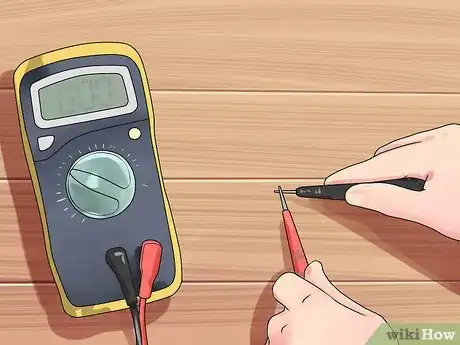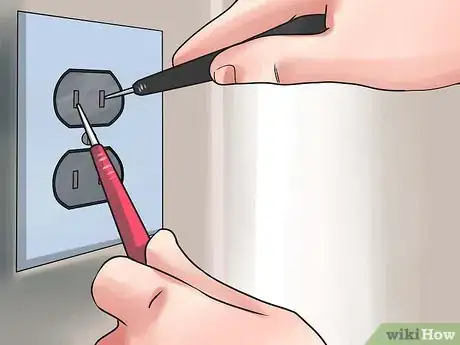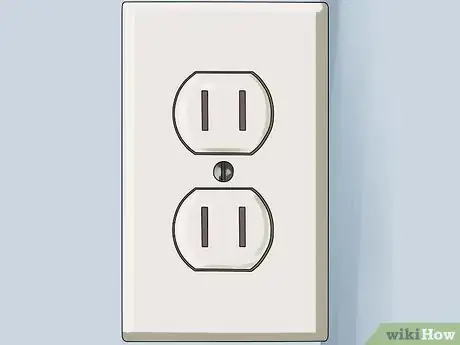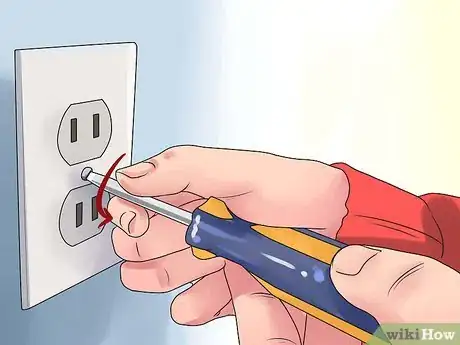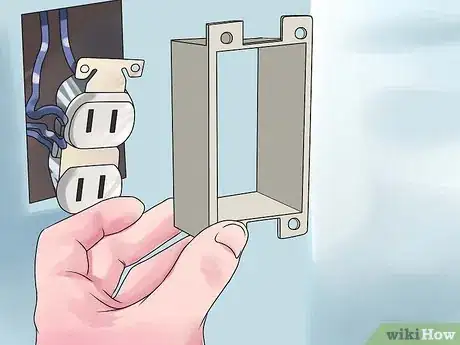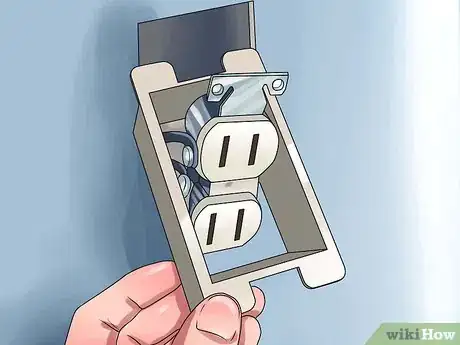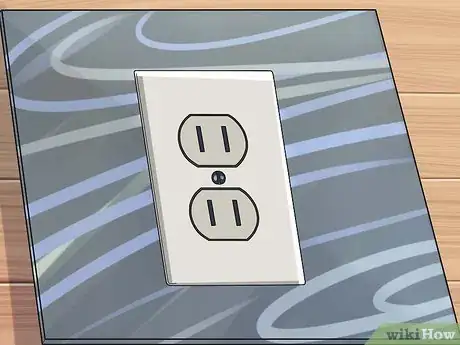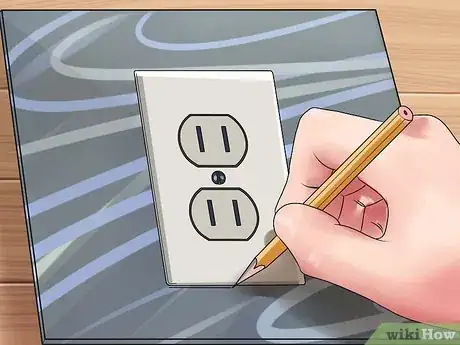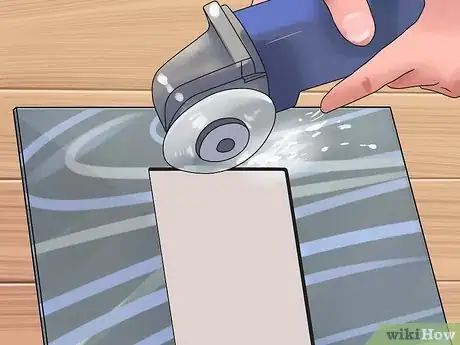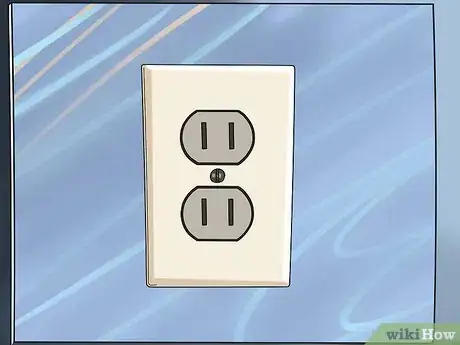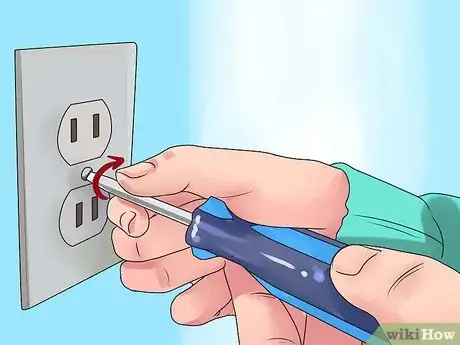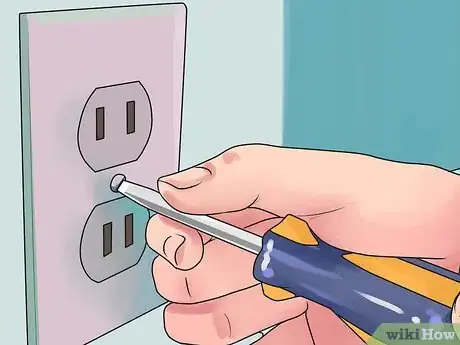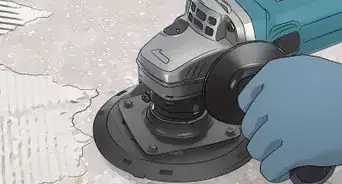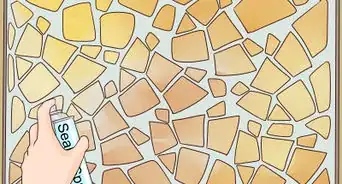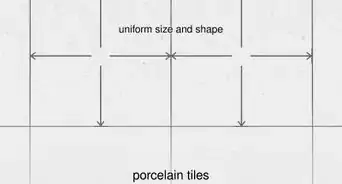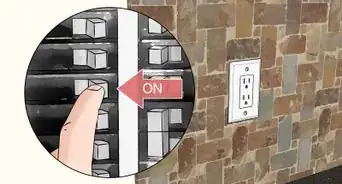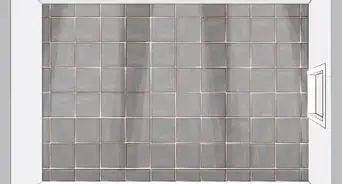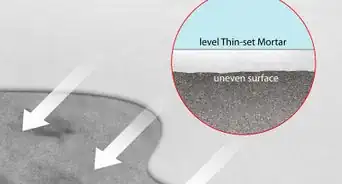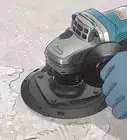This article was co-authored by Ryaan Tuttle. Ryaan Tuttle is a Home Improvement Specialist and the CEO of Best Handyman, Inc. in Boston, Massachusetts. With over 17 years of experience, he specializes in building home service businesses, focusing on creating scalable and efficient brands. With the help of his global team, the companies have achieved over 10+ million in sales and received recognition through magazine features, and enjoy partnerships with wikiHow and Jobber field service software. Boston Magazine and LocalBest.com have named Best Handyman Boston the Best Handyman in Boston. Ryaan holds Construction Supervisor and Home Improvement Contractor Licenses.
This article has been viewed 128,099 times.
Many home tiling jobs will require you to work your tile around existing electrical outlets and switch plates. Bathrooms and kitchens will have one or more outlets that must be incorporated in this way. Achieving a clean finish, with the electrical outlet sitting flush against the surface of the tile, requires a little extra planning and a few special cuts. Fortunately, learning how to tile around outlets is well within the reach of any homeowner that who handle the overall tiling job.
Steps
Turning Off the Electricity to the Outlet
-
1Turn off the switch powering the appropriate outlets. At the home’s electrical box, find the switch powering the outlet(s) with which you’ll be working and turn it off. Use caution since some kitchens may have two separate switches powering the space.
-
2Test the current to a live outlet. Use a current tester to check an outlet that you know still has power running to it. This allows you to check your tester to ensure that it’s in proper working order before trying it on the inactive outlet.Advertisement
-
3Test the inactive outlet(s). Now that you know your tester is working, try it against the inactive outlet(s) to ensure that they have indeed been powered down.
Extending the Outlet
-
1Remove the cover from the electrical outlet. The cover can be removed by loosening the screws securing it to the outlet. There will either be one screw in the center, or two screws on the top and bottom of the outlet cover. Place the outlet cover and the screws aside.
-
2Unscrew the outlet from the electrical box. There will be two long mounting screws securing the electrical outlet to the blue electrical box. Remove them so you can insert the outlet extenders.
-
3Insert outlet extenders to a sufficient depth for your tile. Since the tile adds additional depth from the wall, the original outlet location will be sunken back from the tile surface. You can use either accordion-style[1] or box-style[2] outlet spacers to raise the outlet flush with the tile.
- The accordion design spacers fold over with 1/8” added for each segment. If the depth of your new tile is 5/8” thick, then you can add five segments to raise the outlet 5/8”.[3]
- An outlet box extender is a rectangular ring that fits over and behind the outlet to add additional space between the original outlet box and the outlet.[4]
-
4Reattach the outlet loosely with the spacers in place. Regardless of which type of extender you use, the design has a hole, so you can feed the mounting screw through the extender and back into the outlet box. You won’t tighten it down until after you place your tile.
- This will also allow you to test if your current screws are long enough to reattach the outlet with the extender in place. You may have to purchase longer screws.
Cutting the Tiles to Size
-
1Measure the cut you need to make. Depending on the size and placement of your tile up to the outlet, you’ll likely need to make either an L-shaped cut from the corners of four tiles or a U-shaped cut closer to the centers of two.[5] By attaching the outlet faceplate, you can easily measure the distance between the next closest tile(s) for the length and width up to the faceplate. Since the cut tile needs the faceplate to overlap it, add roughly an additional 1/4” to the measurement—enough so that the tile reaches under the faceplate but not so much that the tile runs into the outlet or mounting screws.
-
2Mark those measurements on the tile(s) you need to cut. Since you obviously can’t fit the uncut tile into the space to trace the measurement, you’ll have to copy the measurement onto the tile before cutting. Remember—measure twice, cut once.
-
3Cut the tiles to size. Using either a tile cutter or wet tile saw, cut the tiles along the measurements you have marked. Do not attempt to cut the tiles using a snap tile cutter, as this tool cannot make partial cuts.
- If you haven’t had to cut any tile for the project yet, then you can read Cut Tile for steps how.
-
4Trim the tiles to fit around the screws. After cutting the tiles to fit underneath the faceplate of the electrical outlet, you may still need to cut a small piece away to fit around the screws securing the outlet to the electrical box. Mark the area that needs to be trimmed with a pencil, and use your tile snips to clear away enough material to accommodate each screw.
Installing the Tile around the Outlet
-
1Install the tiles around the outlet. Apply tile mastic or quick-set mortar to the area around the outlet, being careful not to get any into the electrical box. Push the cut tiles firmly into place. Use appropriately sized tile spacers to keep consistent space between the tiles as they set.
-
2Apply grout between the joints. You have to finish grouting the space between the tiles before you can tighten down the electrical outlet in the box.
-
3Tighten down the electrical outlet. You may have to hold the outlet in place as you tighten to stop it from twisting and misaligning with the faceplate.[6]
-
4Replace the electrical outlet cover. Once the tiles are installed and grouted, replace the outlet cover. The outlet cover should hide all the cut edges of your tiles.
Expert Q&A
-
QuestionHow can you remove grout?
 Ryaan TuttleRyaan Tuttle is a Home Improvement Specialist and the CEO of Best Handyman, Inc. in Boston, Massachusetts. With over 17 years of experience, he specializes in building home service businesses, focusing on creating scalable and efficient brands. With the help of his global team, the companies have achieved over 10+ million in sales and received recognition through magazine features, and enjoy partnerships with wikiHow and Jobber field service software. Boston Magazine and LocalBest.com have named Best Handyman Boston the Best Handyman in Boston. Ryaan holds Construction Supervisor and Home Improvement Contractor Licenses.
Ryaan TuttleRyaan Tuttle is a Home Improvement Specialist and the CEO of Best Handyman, Inc. in Boston, Massachusetts. With over 17 years of experience, he specializes in building home service businesses, focusing on creating scalable and efficient brands. With the help of his global team, the companies have achieved over 10+ million in sales and received recognition through magazine features, and enjoy partnerships with wikiHow and Jobber field service software. Boston Magazine and LocalBest.com have named Best Handyman Boston the Best Handyman in Boston. Ryaan holds Construction Supervisor and Home Improvement Contractor Licenses.
Home Improvement Specialist You can use a Dremel tool. It's an awesome tool for grout removal. They have a special grout bit attachment.
You can use a Dremel tool. It's an awesome tool for grout removal. They have a special grout bit attachment. -
QuestionHow could you whiten dirty grout?
 Ryaan TuttleRyaan Tuttle is a Home Improvement Specialist and the CEO of Best Handyman, Inc. in Boston, Massachusetts. With over 17 years of experience, he specializes in building home service businesses, focusing on creating scalable and efficient brands. With the help of his global team, the companies have achieved over 10+ million in sales and received recognition through magazine features, and enjoy partnerships with wikiHow and Jobber field service software. Boston Magazine and LocalBest.com have named Best Handyman Boston the Best Handyman in Boston. Ryaan holds Construction Supervisor and Home Improvement Contractor Licenses.
Ryaan TuttleRyaan Tuttle is a Home Improvement Specialist and the CEO of Best Handyman, Inc. in Boston, Massachusetts. With over 17 years of experience, he specializes in building home service businesses, focusing on creating scalable and efficient brands. With the help of his global team, the companies have achieved over 10+ million in sales and received recognition through magazine features, and enjoy partnerships with wikiHow and Jobber field service software. Boston Magazine and LocalBest.com have named Best Handyman Boston the Best Handyman in Boston. Ryaan holds Construction Supervisor and Home Improvement Contractor Licenses.
Home Improvement Specialist They make these cool grout pens. It's like a paint marker that's designed to paint the grout lines. Instead of re-grouting an entire floor, you can buy a white grout pen, and go over all the grout lines. One tip is depending on what type of tile you're going to do, you may want to use some painter's tape or blue masking tape and tape off the grout lines.
They make these cool grout pens. It's like a paint marker that's designed to paint the grout lines. Instead of re-grouting an entire floor, you can buy a white grout pen, and go over all the grout lines. One tip is depending on what type of tile you're going to do, you may want to use some painter's tape or blue masking tape and tape off the grout lines. -
QuestionWhen I'm installing tile sheets on a kitchen wall, do I need to put in new outlets first?
 Community AnswerLeave your wiring rough until the walls are completed, then the outlets can be installed flush.
Community AnswerLeave your wiring rough until the walls are completed, then the outlets can be installed flush.
Warnings
- Note that the cut edges of a ceramic or stone tile can be very sharp. Wear gloves and exercise caution when cutting and installing tile to prevent injury.⧼thumbs_response⧽
Things You'll Need
- Flat head screwdriver
- Tiles
- Pencil
- Tile snips
- Wet tile saw (optional)
- Tiling trowel
- Tile mastic or quick-set mortar
- Grout
- Electrical current tester
- Outlet box spacers
References
About This Article
To tile around outlets, start by turning off the electricity to the outlets. Next, remove the cover plate by unscrewing the hardware holding it in place. Then, unscrew the outlet from the electrical box so you can insert outlet extenders to accommodate the added depth of the tiles. Once the extenders are in place, reattach the outlet loosely until the tiles are in place. Afterwards, cut the tiles to fit around the outlet, apply tile mastic to the area, and push the tiles into place. Finally, tighten down the electrical outlet and replace the outlet cover. To learn how to measure the cuts you need to make on the tile, keep reading!

